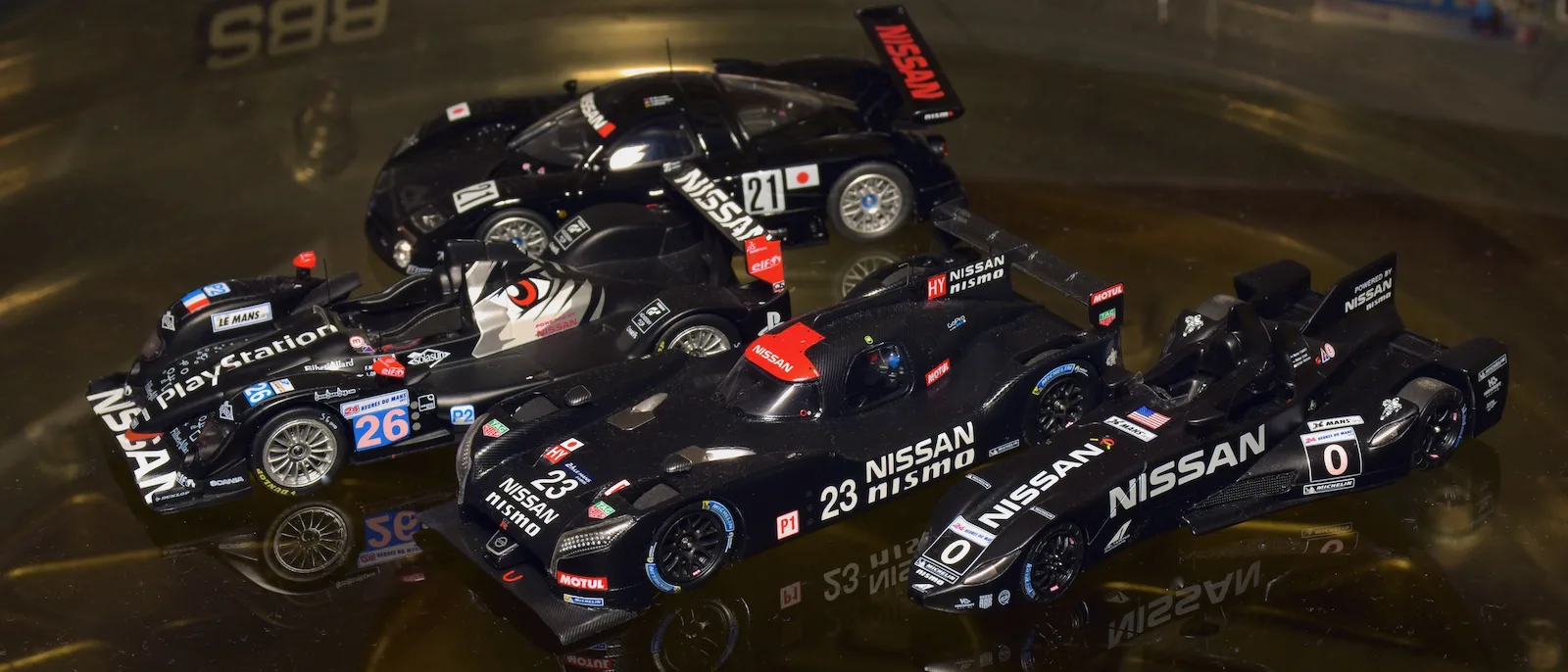Published February 9, 2025 | Last update February 9, 2025 | 25 models online
Nissan has been active in motorsports for many years, sometimes following the main stream such as in Group C, sometimes leading the way as they did with the Skyline. And in other moments they acted completely different, for instance with the DeltaWing and GT-R LM.
Enjoy this remarkable collection.
R390 GT1
1997 Le Mans 24h, Nissan R390 GT1. Nissan also built a prototype GT1 car, with the engine of the GTP Nissan. It was as fast as the McLarens, but the team had to change the cooling just before the race, because its position was not in line with the homologation model. The result was that the Nissans suffered with overheating problems that slowed them down or even caused a retirement.
#21 Martin Brundle (GB) / Jörg Müller (D) / Wayne Taylor (SA) – DNF / spin
#22 Eric van de Poele (B) / Aguri Suzuki (J) / Riccardo Patrese (I) – DNF / overheating
#23 Erik Comas (F) / Kazuyoshi Hoshino (J) / Masahiko Kageyama (J) – 12th / 5th GT1
Nismo Nissan R390 GT1 – 3.5 liter Nissan VRH35L – V8 90º twin turbo. Approx. 650 hp. Bridgestone tires. Weight 1100 kg. Carbon fibre monocoque TWR/Astec #R4, #R1 & #R2
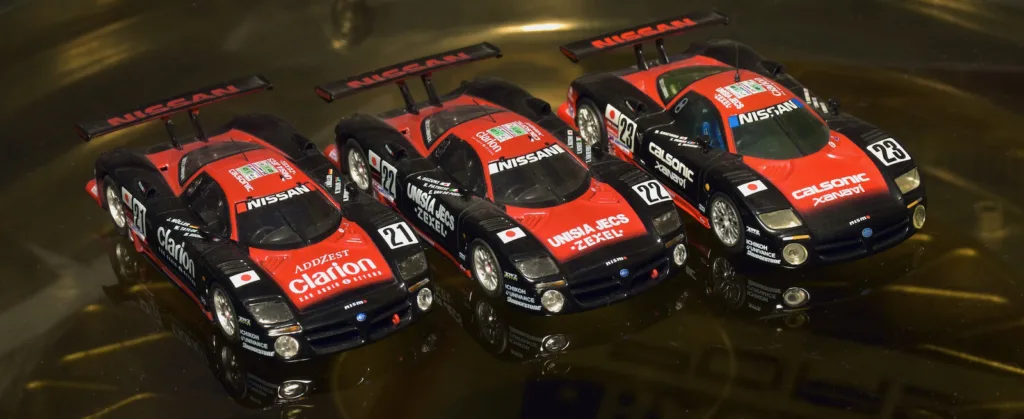
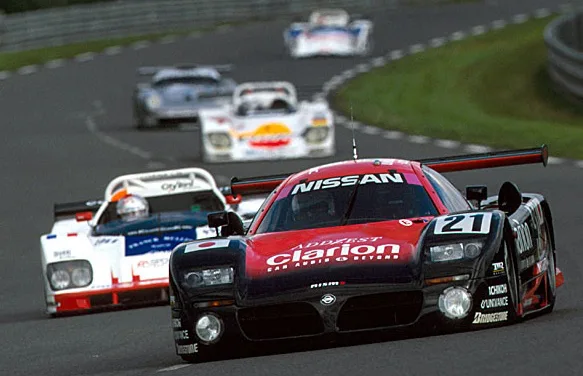
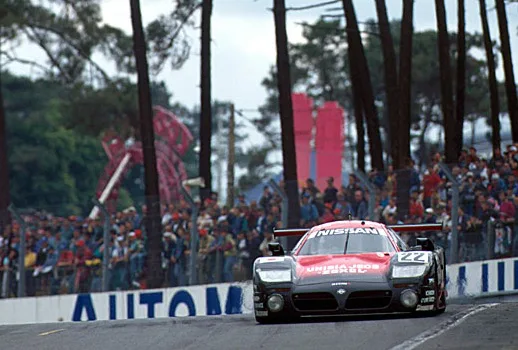
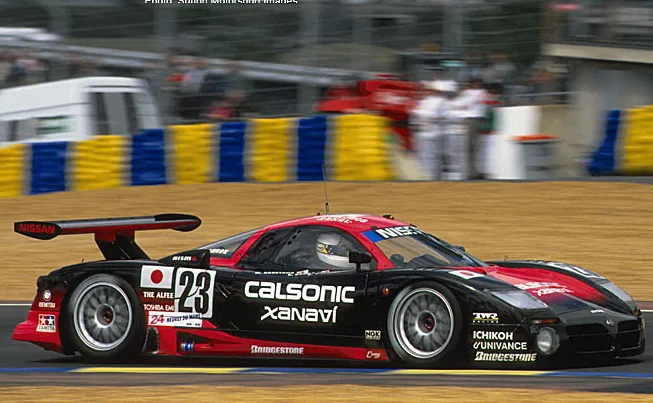

- KYOSHO K03330A, K03330B & TAMIYA 23506×4300 (diecast)
1997 Le Mans pre-qualifying, Nissan R390 GT1. Nissan also built a prototype GT1 car, with the engine of the GTP Nissan. During pre-qualifying in May they surprised the world by clocking the fastest time of all. It appeared that the cooling was not in line with the regulations, but we didn’t know at that time.
#21 Martin Brundle (GB) / Jörg Müller (D) – 1st
Nismo Nissan R390 GT1 – 3.5 liter Nissan VRH35L – V8 90º twin turbo. Approx. 650 hp. Bridgestone tires. Weight 1100 kg. Carbon fibre monocoque TWR/Astec #R4
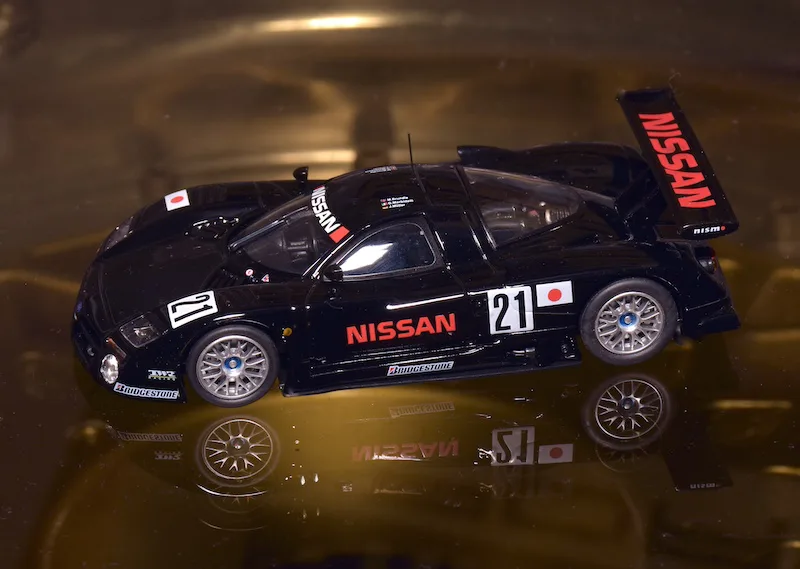
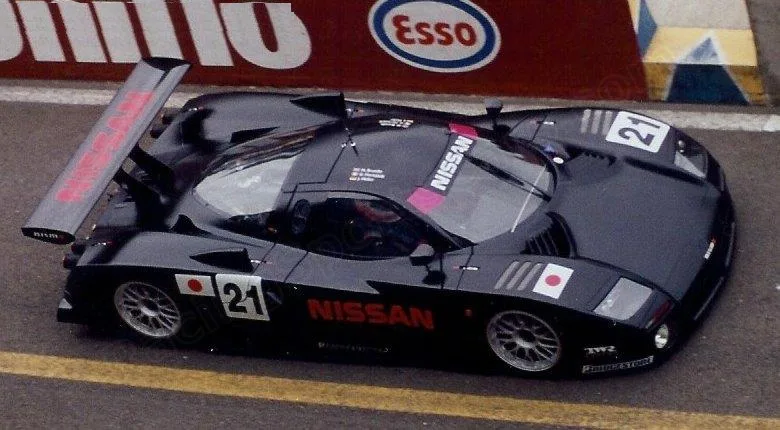
- KYOSHO K03331A (diecast)
1998 Le Mans 24h, Nissan R390 GT1. The 1998 version of the Nissan R390 was longer, faster and more reliable, but not fast enough to threaten the competition that improved substantially more. But the reliability was perfect: all 4 cars finished in the top 10.
#30 John Nielsen (DK) / Michael Krumm (D) / Franck Lagorce (F) – 5th
#31 Jan Lammers (NL) / Andrea Montermini (I) / Erik Comas (F) – 6th
#32 Kazuyoshi Hoshino (J) / Aguri Suzuki (J) / Masahiko Kageyama (J) – 3rd
#33 Satoshi Motoyama (J) / Takuyo Kurosawa (J) / Masami Kageyama (J) – 10th / 9th GT1
TWR Nissan R390 GT1 – 3.5 liter Nissan VRH35L – V8 90º twin turbo. Approx. 650 hp. Bridgestone tires. Weight 1100 kg. Carbon fibre monocoque TWR/Astec #R6, #R8, #R7 & #R1
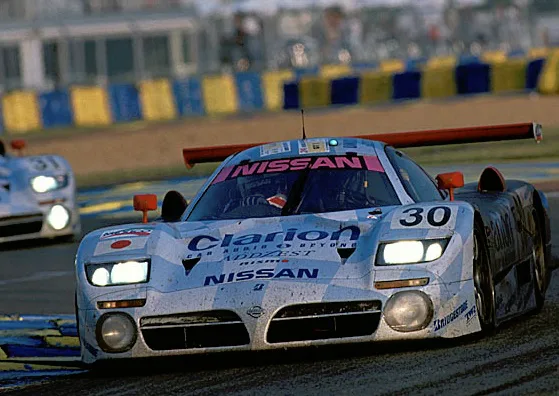
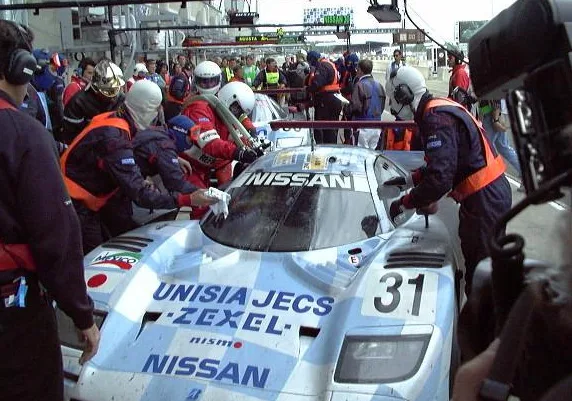
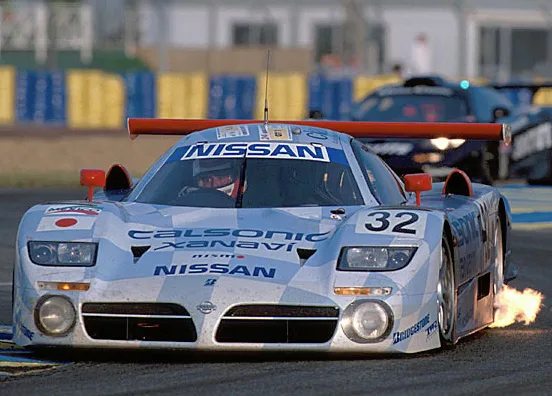

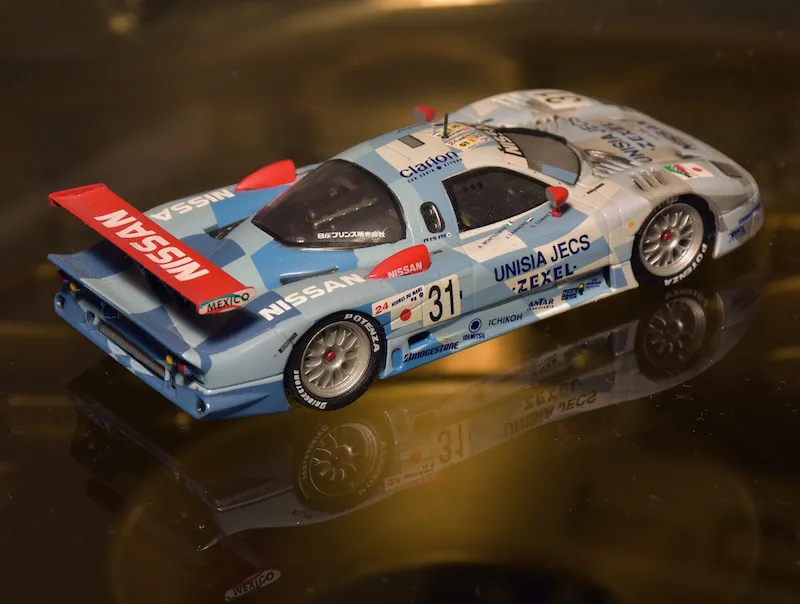
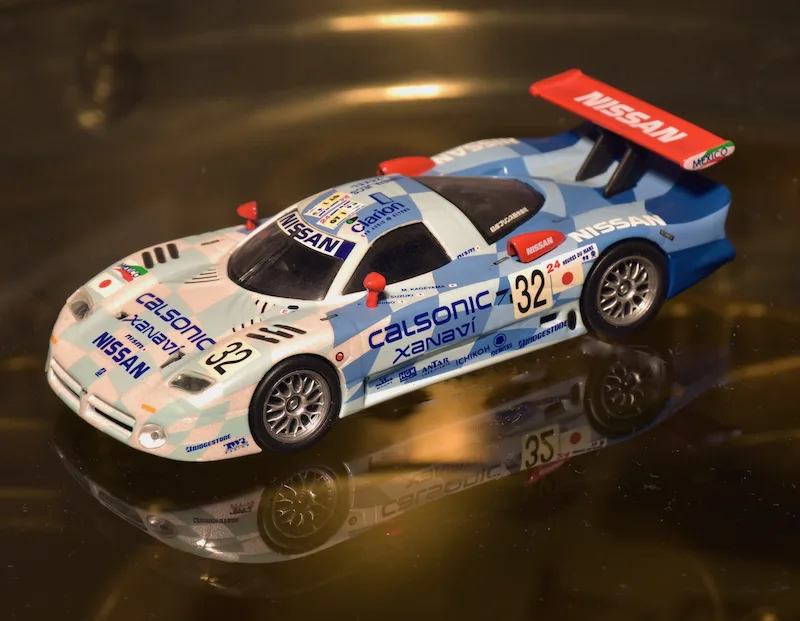
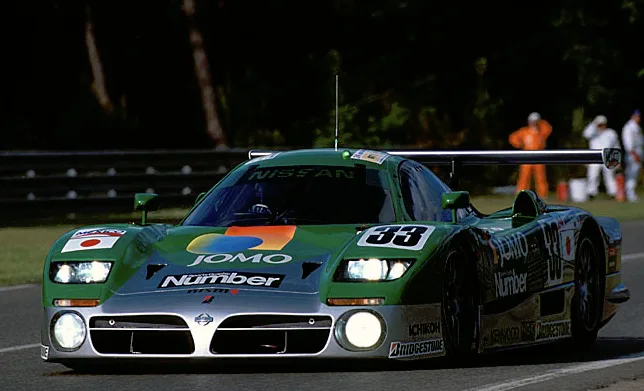
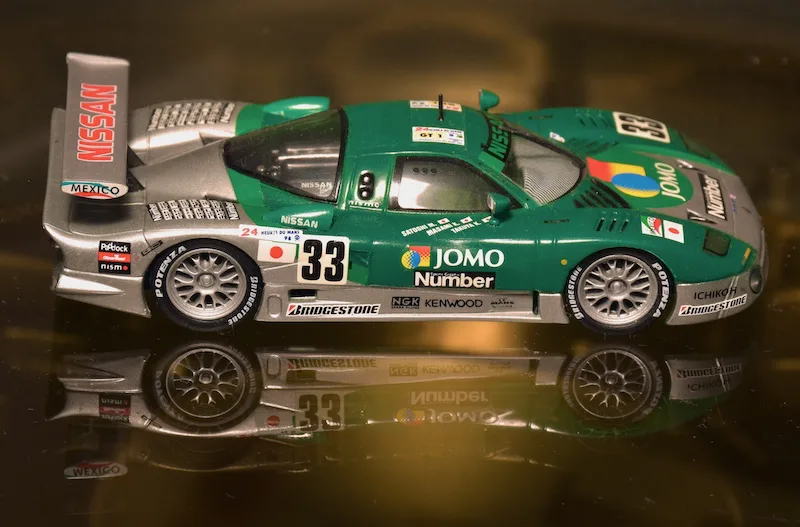
- ONYX XLM99001, XLM99002, XLM99004. ALTAYA Monstres sacres de l’endurance 65 (diecast)
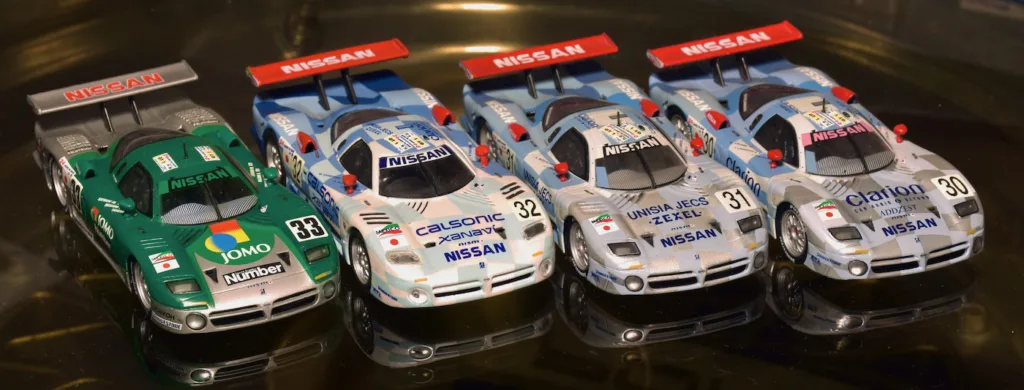
LMP & DPi
1998 Le Mans 24h, Courage C51 – Nissan. In 1998 Nissan bet on two horses. Not only entered they the GT1 versions of the R390, they also provided two Courage prototypes with Nissan engines, as they would do in 1999. This car was faster in qualifying than last year but 10 places more behind on the grid. That is how fast the GT1’s were this year. Both Courages retired with technical problems.
#13 Didier Cottaz (F) / Jean-Philippe Belloc (
F) / Marc Goossens (B
) – DNF / gearbox
#14 Fredrik Ekblom (S) / Patrice Gay (F) / Tetsuya Tsuchiya (J) – DNF / cooling
Courage C51 – 3.5 liter Nissan VRH 35Z V8 twin turbo, approx. 650 hp. Michelin tires. Weight 900 kg. Carbon fibre monocoque, chassisnr. C51 #002 & C51 #001 (C41 #001)
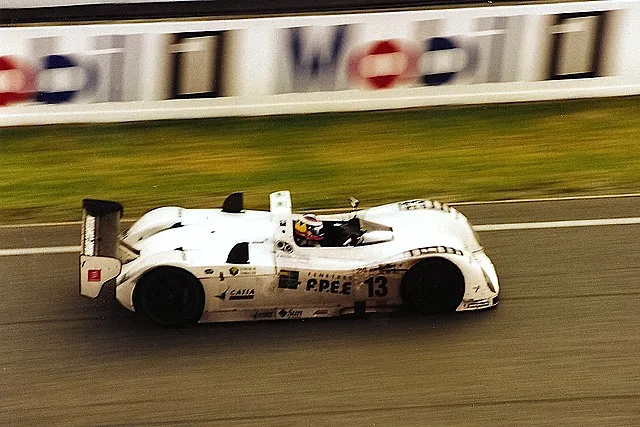
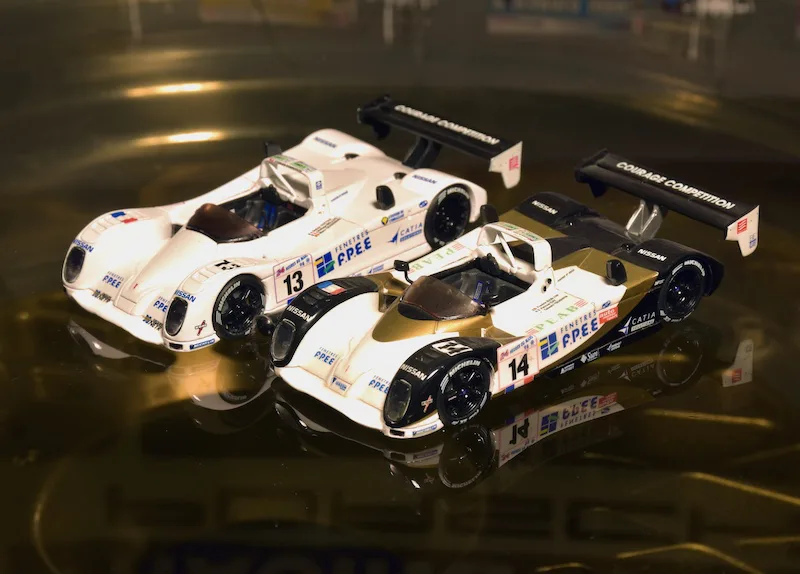
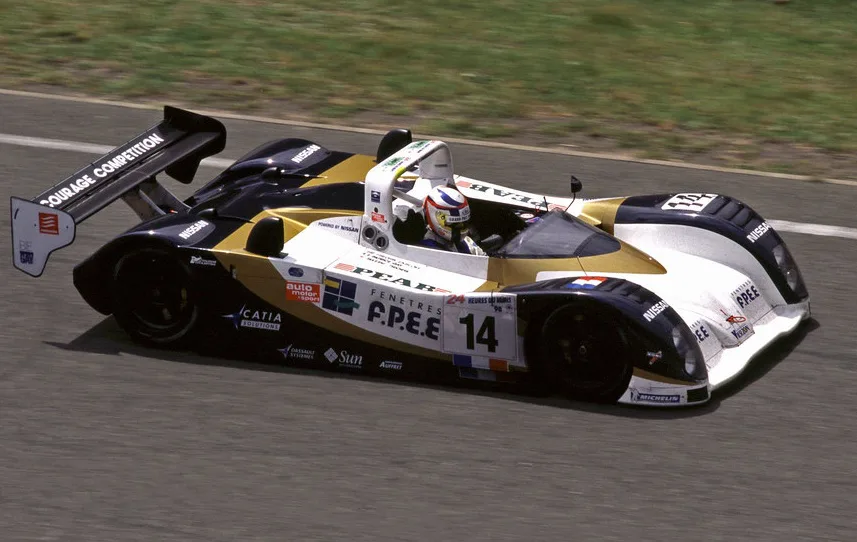
- SPARK SCCG 02 & SCCG 03 (resin)
1999 Le Mans 24h, Courage C52 – Nissan. After the ZX, Skyline and R390’s, Nissan tried to win Le Mans with an open prototype. They supported and entered Courages with Nissan V8 turbo engines and also brought the new R391 with atmospheric V8. This Courage finished 8th.
#21 Didier Cottaz (F) / Frederik Ekblom (
S) / Marc Goossens (B) – 8th / 7th LMP1
Courage C52- 3.5 liter Nissan VRH 35Z V8 twin turbo, approx. 650 hp. Michelin tires. Weight 900 kg. Carbon fibre monocoque, chassisnr. C52 #001

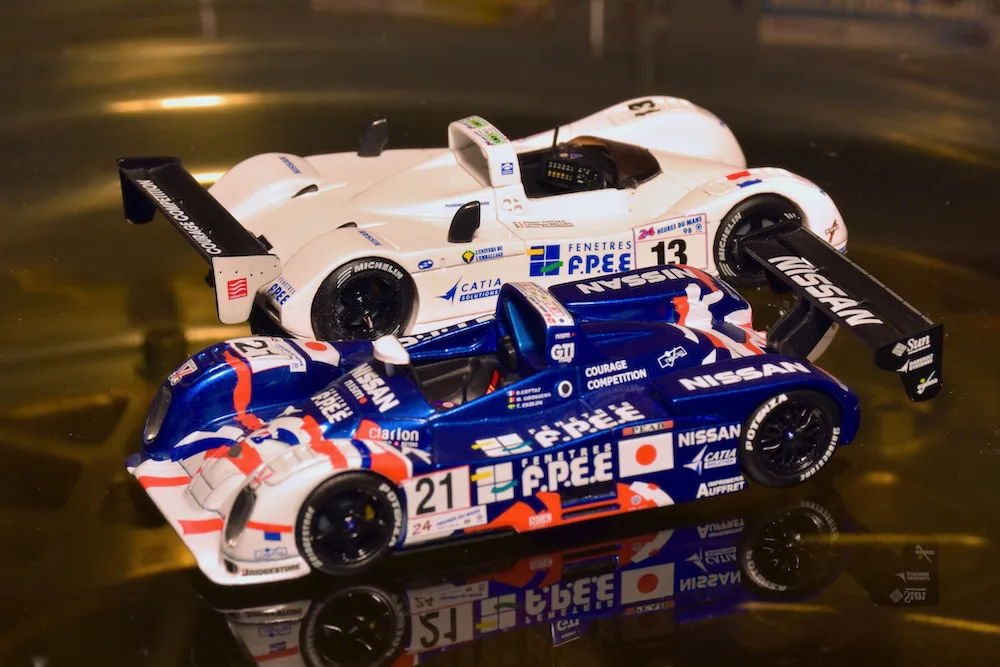
- SPARK SCCG 07 (resin)
1999 Le Mans 24h, Nissan R391. The Nissan R391 was developed and built by G-Force in the UK and was powered by a normally aspirated Infinity V8 engine. It failed to finish unfortunately, the #23 didn’t even make it to the start dus to an accident.
#22 Erik Comas (F) / Michael Krumm (D) / Satoshi Motoyama (J) – DNF
Nismo Nissan R391 – 5.0 Nissan Infinity VRA50H V8, approx. 600 hp. Bridgestone tires. Weight 900 kg. Carbon fibre monocoque, chassisnr. G-Force #01
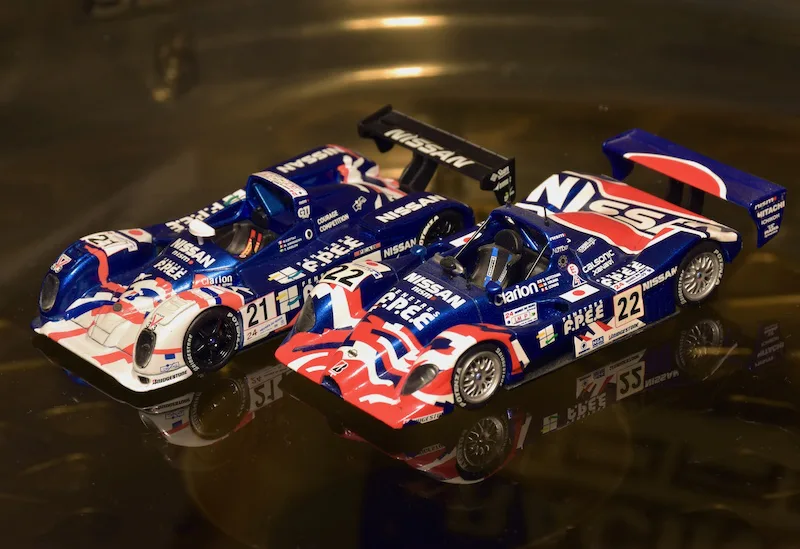

- IXO MCD 002 limited 999 pcs (diecast)
2011 Le Mans 24h, Oreca 03 – Nissan. In the new LMP2 class, cars use production based engines, mostly from Nissan, Honda-HPD and Judd-BMW. Chassis are affordable and LMP2 has become a very attractive category in only two years time. This Oreca – Nissan is entered by French Signatech team with support from Playstation. Spanish driver Lucas Ordoñez was the first winner of the Playstation Challenge. He proved he is not only good on a game computer, but also in real. The team finished 2nd in class.
#26 Franck Mailleux (F) / Lucas Ordoñez (ES) / Soheil Ayari (F) – 9th / 2nd LMP2
Signatech Nissan Oreca 03 – 4.5 liter Nissan VK45DE V8, approx. 460 hp. Dunlop tires. Weight 900 kg. Carbon fibre monocoque, chassisnr. Oreca #05
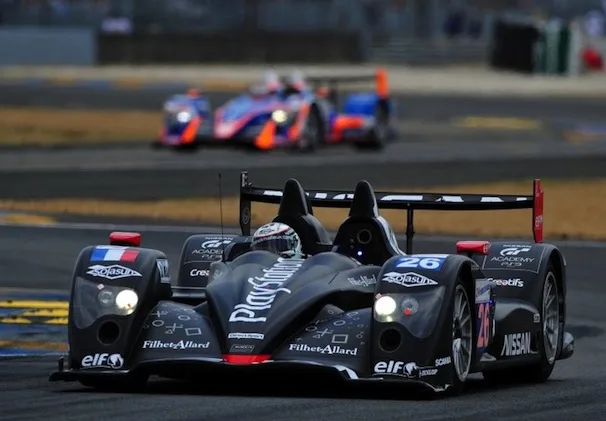

- IXO LMM215 (diecast)
2017 Petit Le Mans, Nissan DPi. The Nissan DPi was in fact a Ligier PS2 LMP2 car with the powerful V6 turbo engine from the Nissan GTR. It had already won Daytona and Sebring in 2016 when it still was still called a Ligier and Honda-powered. In 2017 the green and black car took victory in the Petit Le Mans at Road Atlanta.
#2 Scott Sharp (USA) / Brendon Hartley (NZ) / Ryan Dalziel (USA) – 1st
NISMO Nissan DPi – 3.8 liter Nissan VR38DETT V6 twin turbo, approx. 600 hp. Continental tires. Weight 930 kg. Carbon fibre monocoque, chassisnr. Onroak Ligier #OR05-02

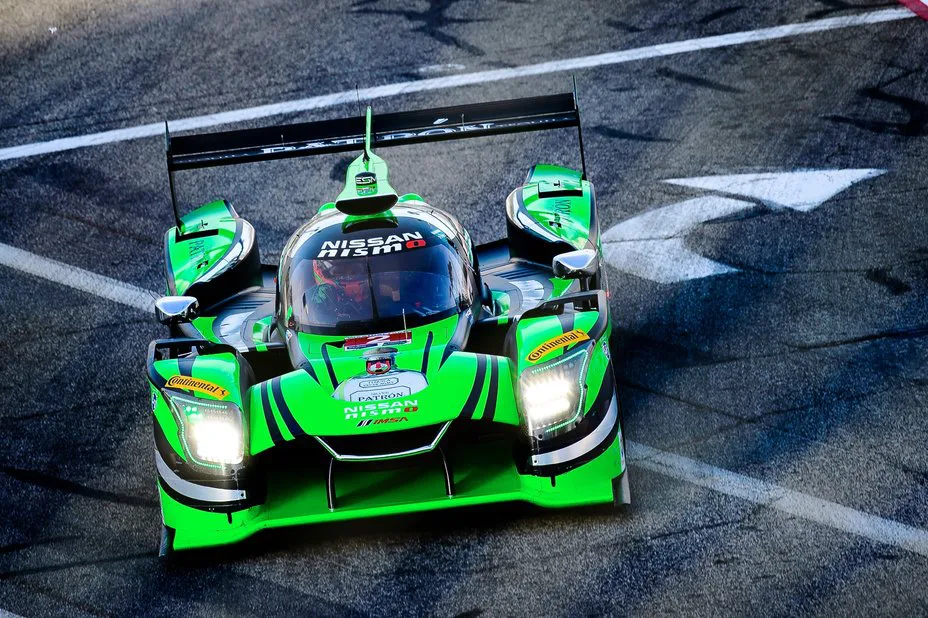

SPARK US033 #072 / 300 pcs (resin).
DeltaWing
2011 Presentation, DeltaWing. ACO reserved a spot for a car that used new technology. This DeltaWing would take that 56th entry. The original design was meant for use in Indycars but now adapted for endurance racing. The project was supported by Don Panoz, the car was built by Dan Gurney’s All American Racers using a monocoque of the failed Aston Martin AMR-One. The DeltaWing has a low weight, small engine and small fuel tank. The front track is very narrow and so are the specially developed tires. This presentation version is much longer than the race car that was entered at Le Mans 2012.
Presentation version – no engine mounted. Michelin tires. Weight 475 kg. Carbon fibre monocoque, chassis DW LM12 #001 (Prodrive)
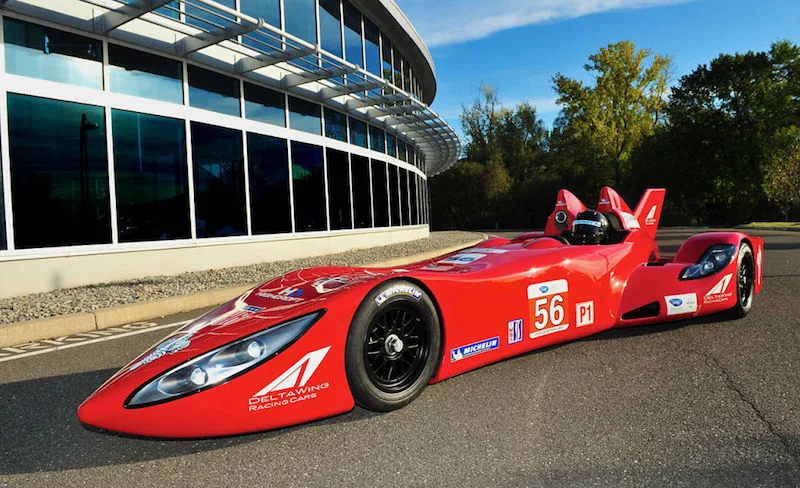
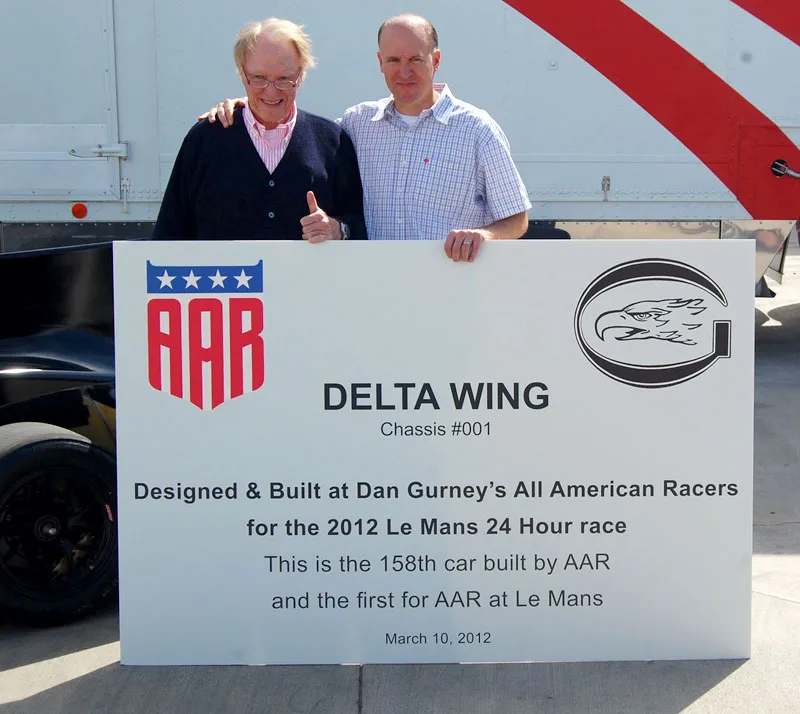

- BIZARRE B1000 (resin)
2012 Le Mans 24h, DeltaWing LM12 – Nissan. After the Deltawing was presented, Nissan entered as sponsor and provided the engine. Highcroft Racing took care of the unusual little car that qualified 29th in between the LMP2 cars. During the race, the DeltaWing was pushed off the road by a Toyota and had to retire because there was too much damage.
#0 Marino Franchitti (GB) / Michael Krumm (D) / Satoshi Motoyama (J) – DNF / damage after accident
DeltaWing LM12 – 1.6 liter Nissan / RML straight-4 turbo, approx. 300 hp. Michelin tires. Weight 475 kg. Carbon fibre monocoque, chassis DW LM12 #001 (Prodrive)
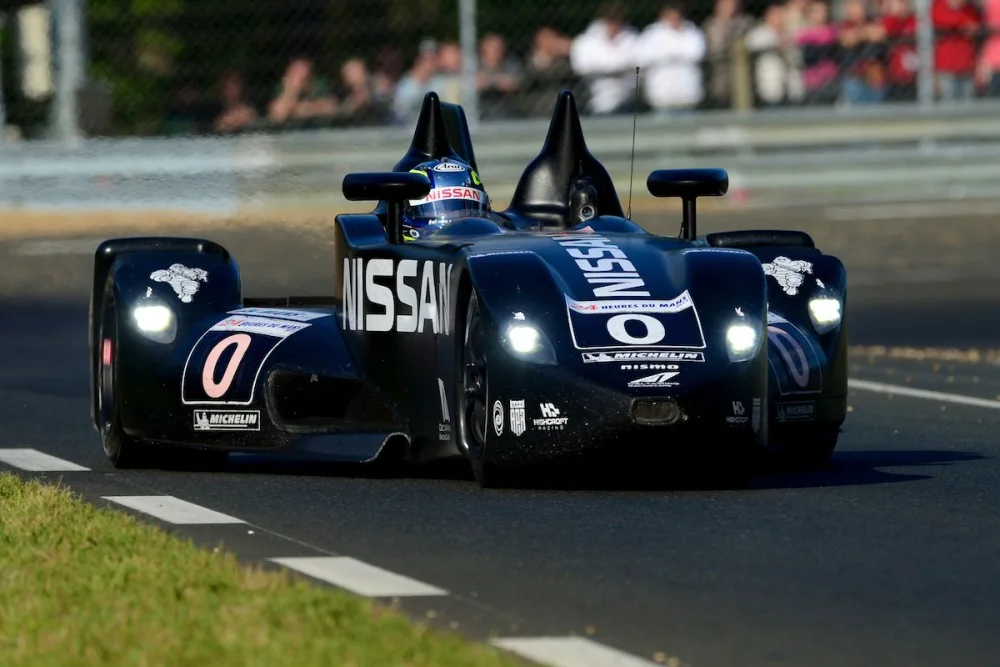
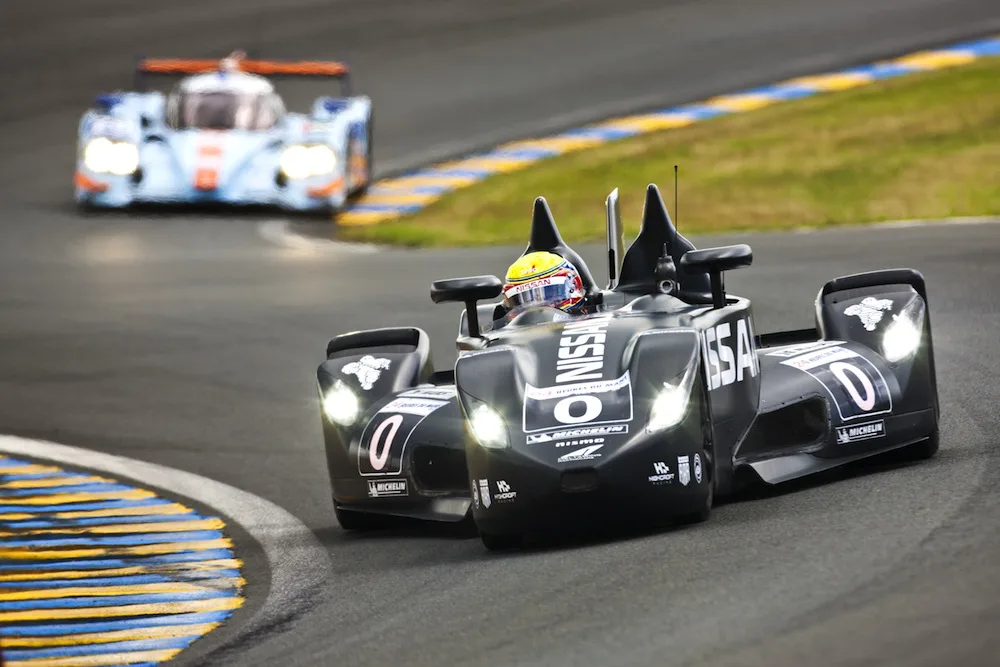

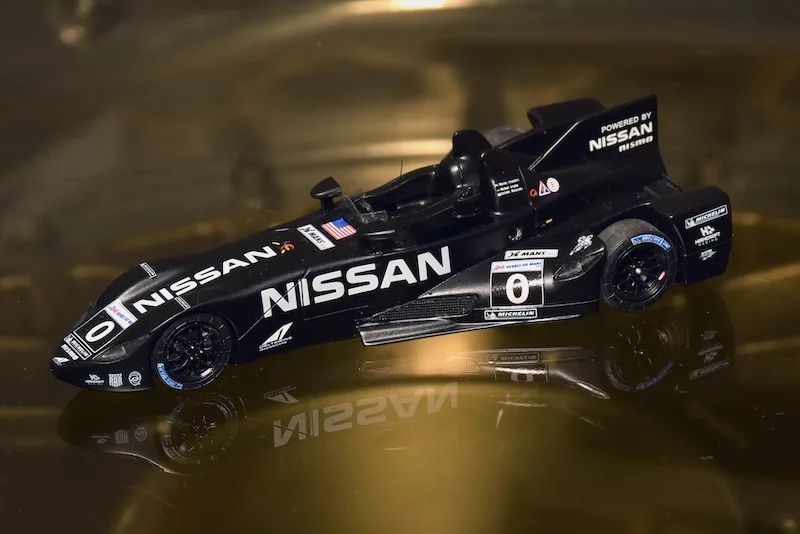

- SPARK S3741 (resin)
2013 Sebring, DeltaWing LM12 – Elan. The Nissan supported DeltaWing raced at Le Mans and later in the year after the Petit Le Mans where the car finished in fine 5th place, DeltaWing and Nissan split up. DeltaWing Racing replaced the engine by an Elan built one and entered the car in the 2013 American Le Mans Series in the P1 category. In Sebring the team retired with engine problems.
#0 Olivier Pla (F) / Andy Meyrick (GB) – DNF / engine
DeltaWing LM12 – 1.9 liter Elan straight-4 turbo, approx. 340 hp. Bridgestone tires. Weight 490 kg. Carbon fibre monocoque, chassis DW LM12 #001 (Prodrive)


- SPARK US005 #101 / 750 pcs (resin)
2013 Sebring, DeltaWing DMC13 – Elan. During the 2013 season, DeltaWing introduced a new chassis with a closed cockpit. It retired at Petit Le Mans, something that happened to often to the little sports car however the speed is there, it had some good qualifying results.
#0 Andy Meyrick (GB) / Katherine Legge (USA) – DNF
DeltaWing DMC-13 – 1.9 liter Elan straight-4 turbo, approx. 340 hp. Bridgestone tires. Weight 500 kg. Carbon fibre monocoque, chassis DWC 13 #01 (Elan)
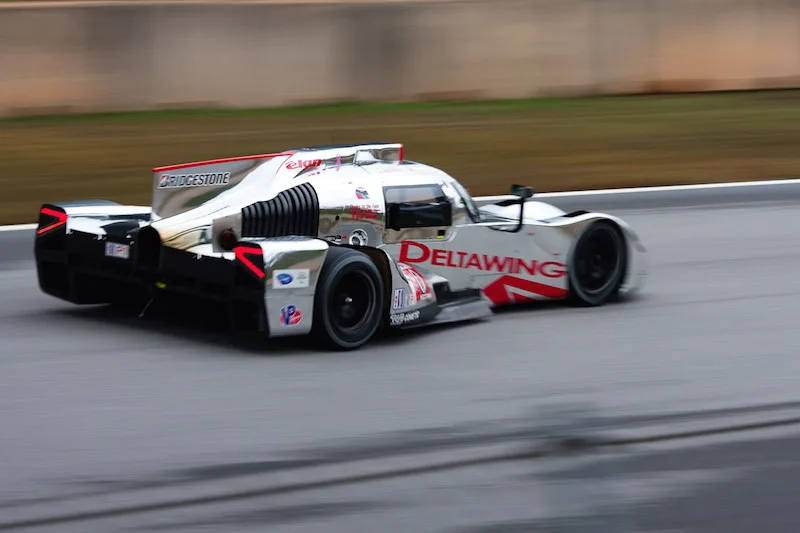
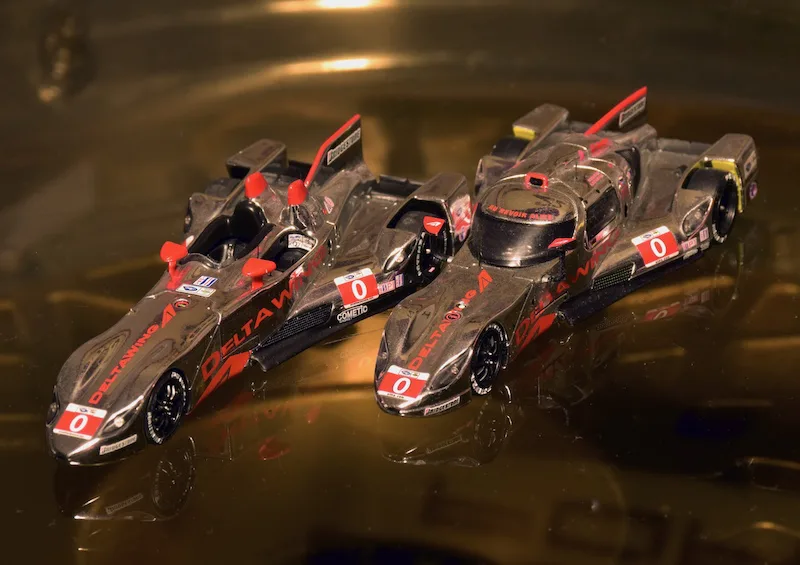
- SPARK US010 #341 / 400 pcs (resin)
2014 Le Mans 24h, Nissan ZEOD RC. ACO reserved one spot for a car that used new technology, the Nissan powered DeltaWing took that 56th entry in 2012. The DeltaWing team and Nissan split up. This year Nissan built its own version of the DeltaWing, the hybrid ZEOD (Zero Emission On Demand) which led to an argue about the intellectual rights on the design with DeltaWing Racing. The car retired due to a failure of the conventional gear box, but not after it reached two of its goals: a full lap on racing speed and a top speed of over 300 kmh, both with 100% electrical power.
#0 Wolfgang Reip (D) / Lucas Ordoñez (ES) / Satoshi Motoyama (J) – DNF / gear box
Nismo Nissan ZEOD RC – 1.5 liter Nissan straight-4 turbo, 350 hp + 150 hp electric. Michelin tires. Weight 770 kg. Carbon fibre monocoque, chassisnr. #01 (Adess)
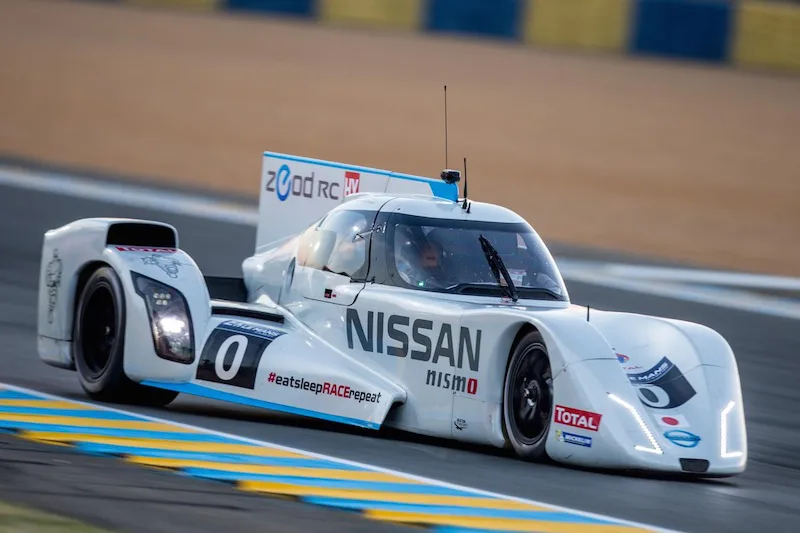

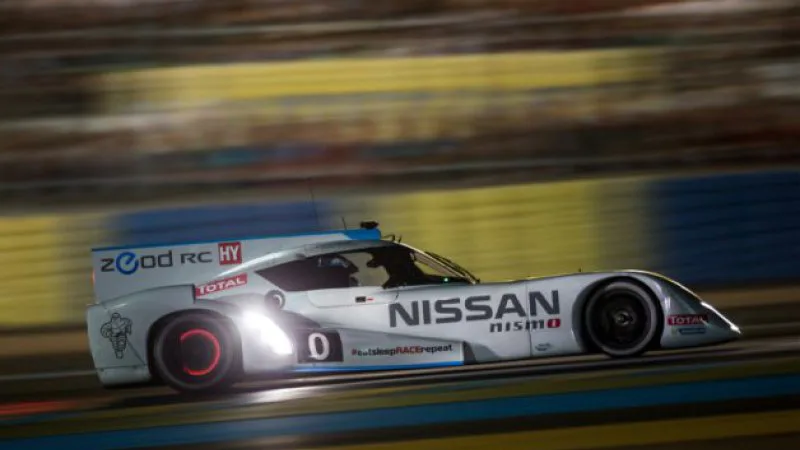
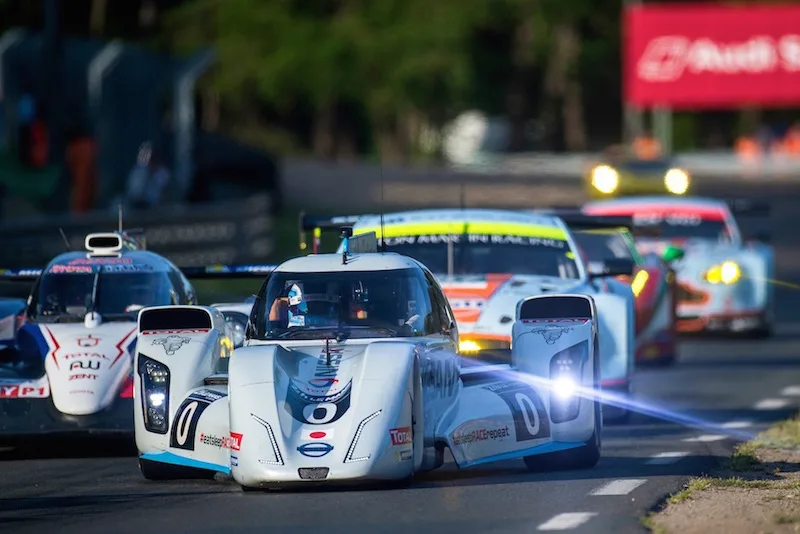
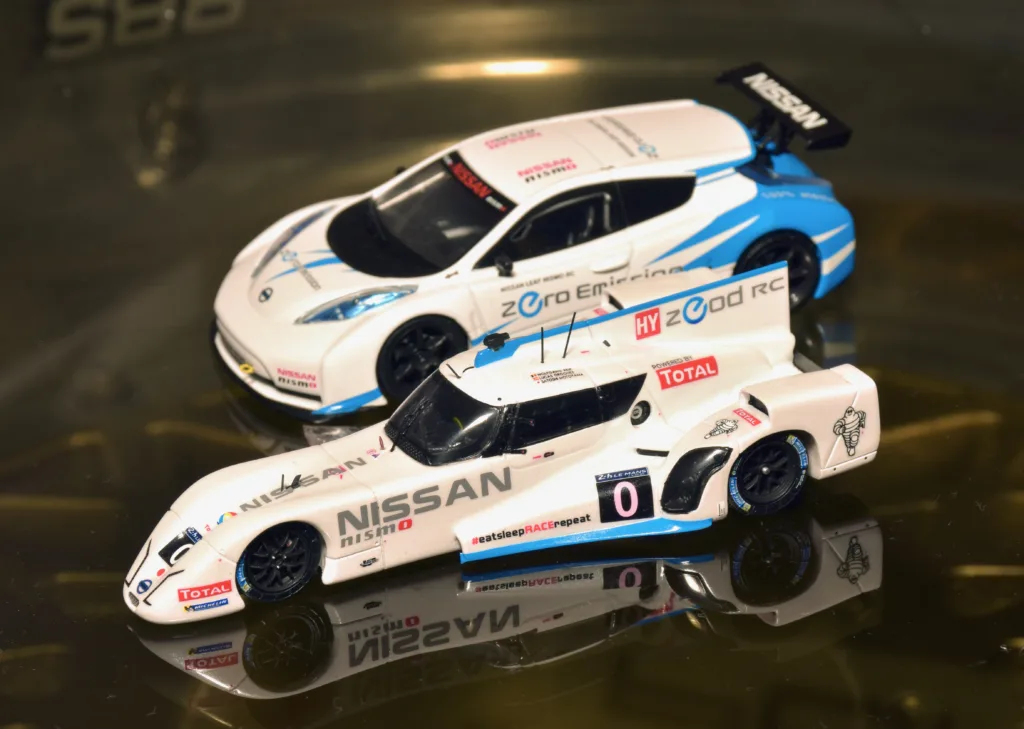
- BIZARRE BZ1050 (resin) + Nissan Leaf Nismo RC J-COLLECTION JC240 (diecast)
2016 Daytona 24h, DeltaWing DMC13 – Elan. This is a new chassis with a closed cockpit which sometimes surprises with its speed but often fails to finish due to reliability issues. 2016 is the last season for the DeltaWing. The car leads the race for a while but crashes in a kind of stupid way and retires. The religious text clearly didn’t help …
#0 Andy Meyrick (GB) / Katherine Legge (USA) / Sean Rayhall (USA) / Andreas Wirth (D) – DNF
DeltaWing DMC-13 – 1.9 liter Elan straight-4 turbo, approx. 340 hp. Continental tires. Weight 500 kg. Carbon fibre monocoque, chassis DWC 13 #03 (Elan)
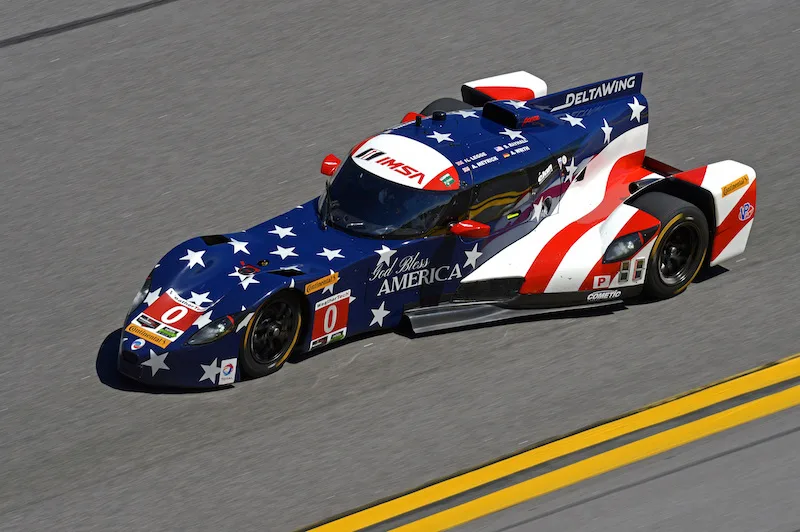
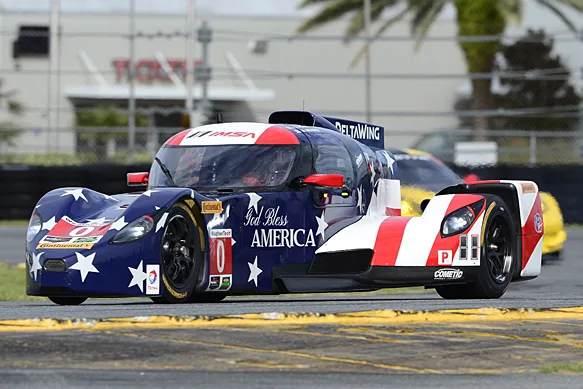
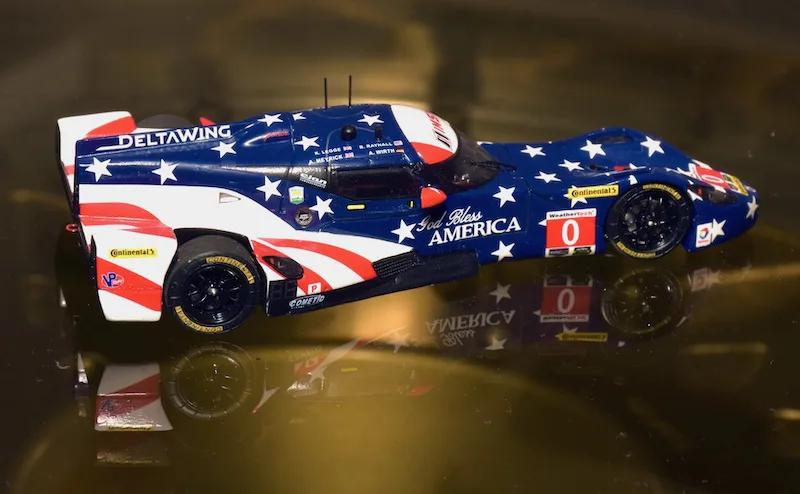
- SPARK US013 #292 / 300 pcs (resin)
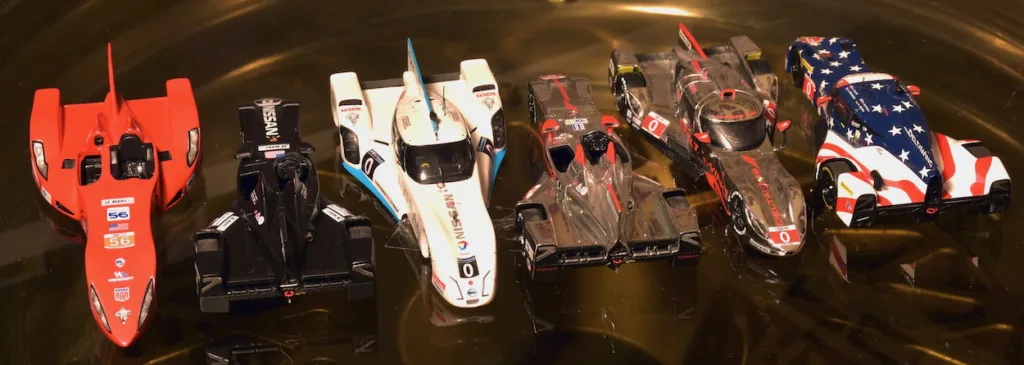
GT-R LM
2015 Le Mans 24h, Nissan GT-R LM. After the experiments with the DeltaWing and ZEOD, Nissan makes another great appearance with the spectacular GT-R LM. The engine comes from the GT-R and has sufficient power. The V6 twin-turbo is placed in front of the driver and drives the front wheels. A hybrid system is supposed to assist and drive the rear wheels thus leaving much empty space that can be used for aerodynamics; much of the air flows right through the bodywork. The PR and transparency of the team are great but the car is a disaster: The hybrid system doesn’t work, therefore the car is too slow out of corners and the front tires and brakes suffer much more than expected. Two cars retire, a third makes it to the finish but isn’t classified.
#21 Tsugio Matsuda (J) / Mark Shulzhitskiy (RUS) / Lucas Ordoñez (ES) – DNF
#22 Harry Tincknell (GB) / Michael Krumm (D) / Alex Buncomb (GB) – DNC
#23 Olivier Pla (F) / Jann Mardenborough (GB) / Max Chilton (GB) – DNF
Nismo Nissan GT-R LM – 3.0 liter Nissan VRX30A V6 twin-turbo, approx. 600 hp. Michelin tires. Weight 870 kg. Carbon fibre monocoque, chassisnrs. Nismo #15-003, #15-004, #15-001
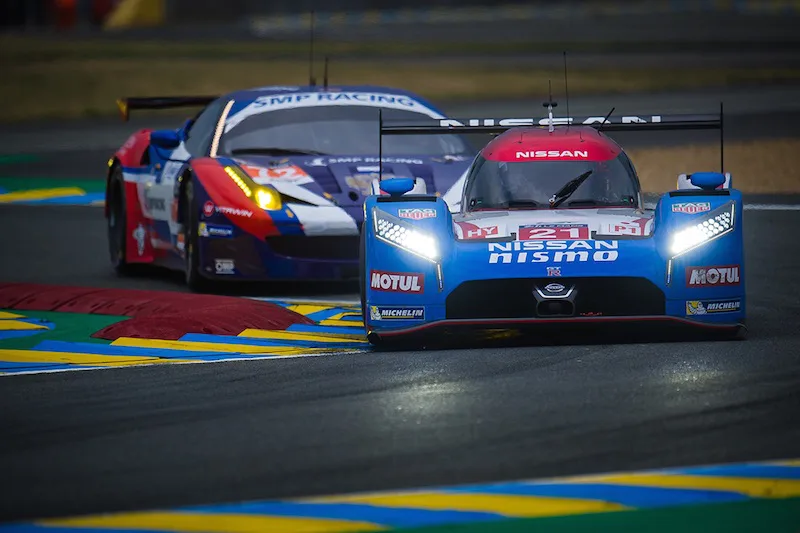

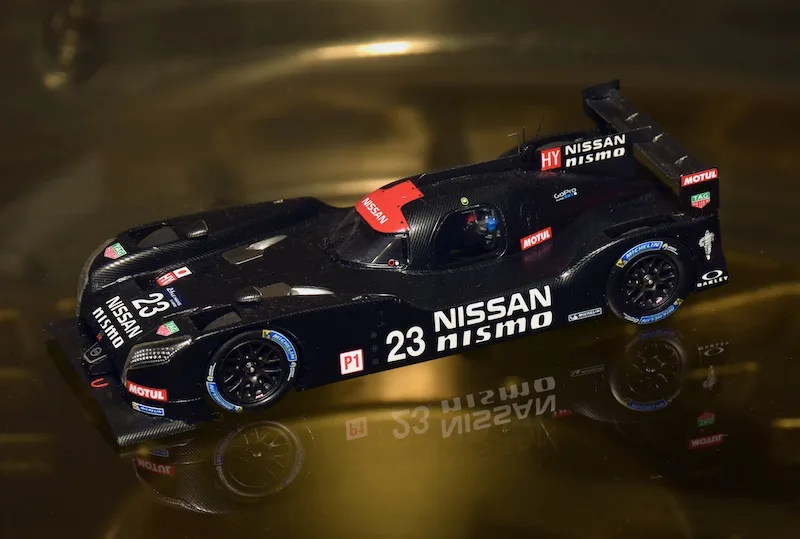
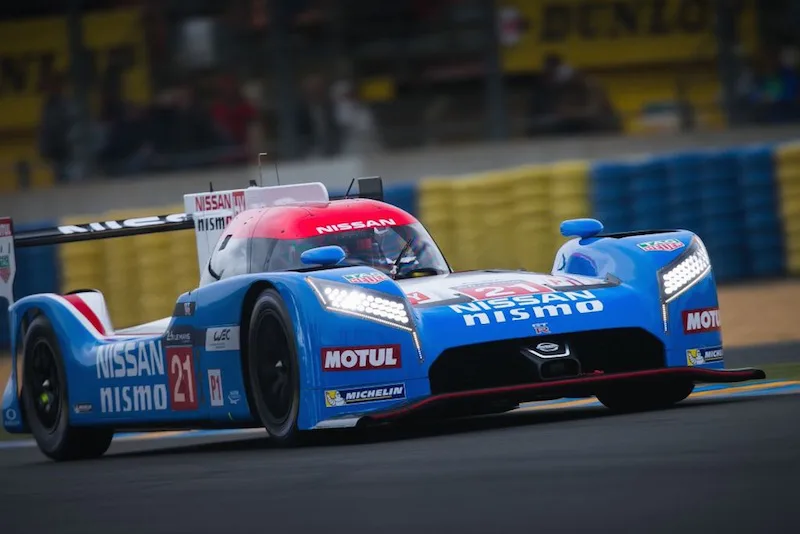
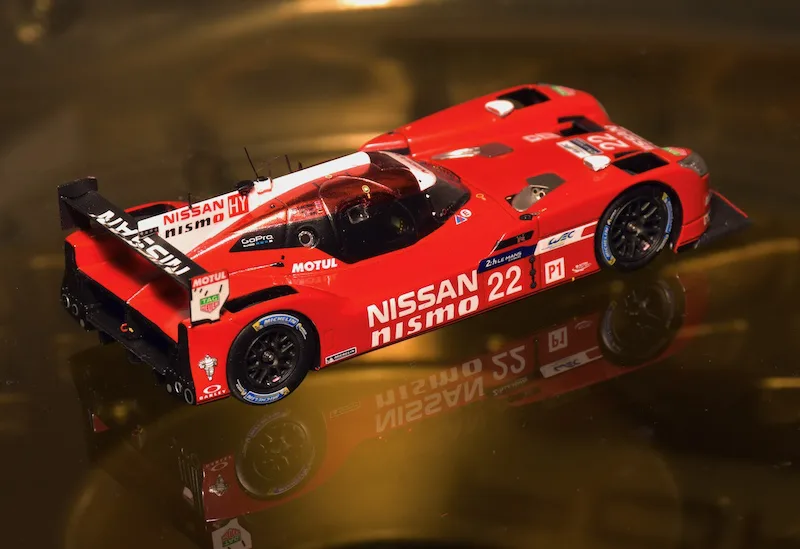
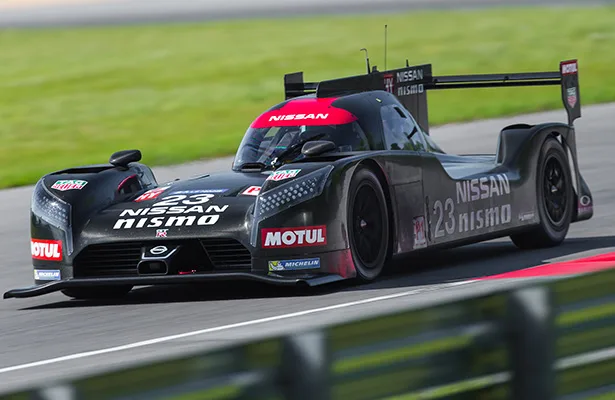
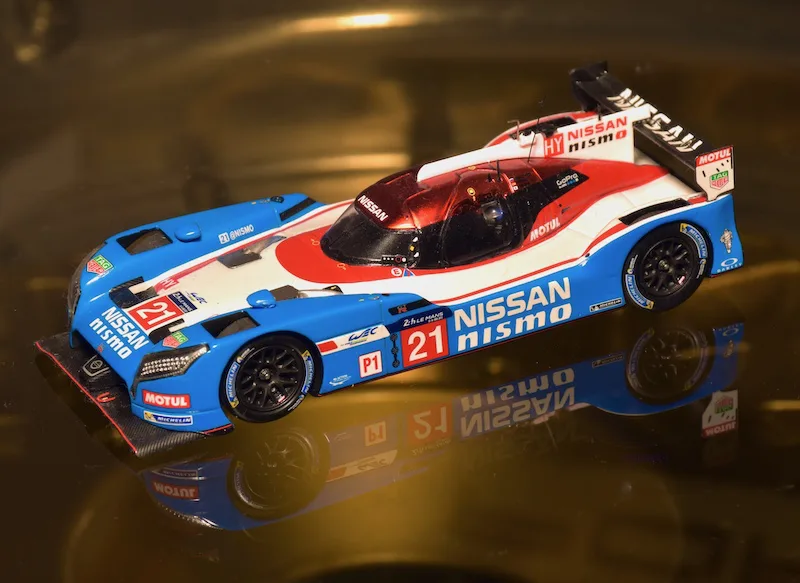
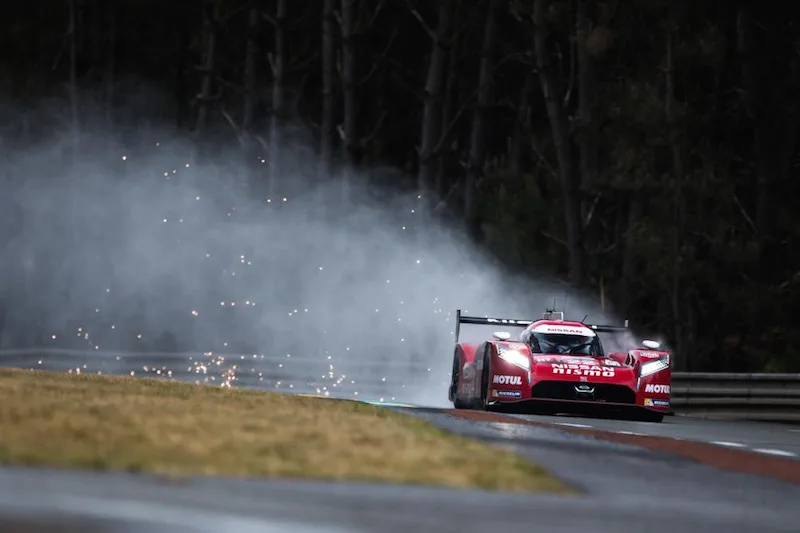

- SPARK S4640, S4641, S4560 (resin)
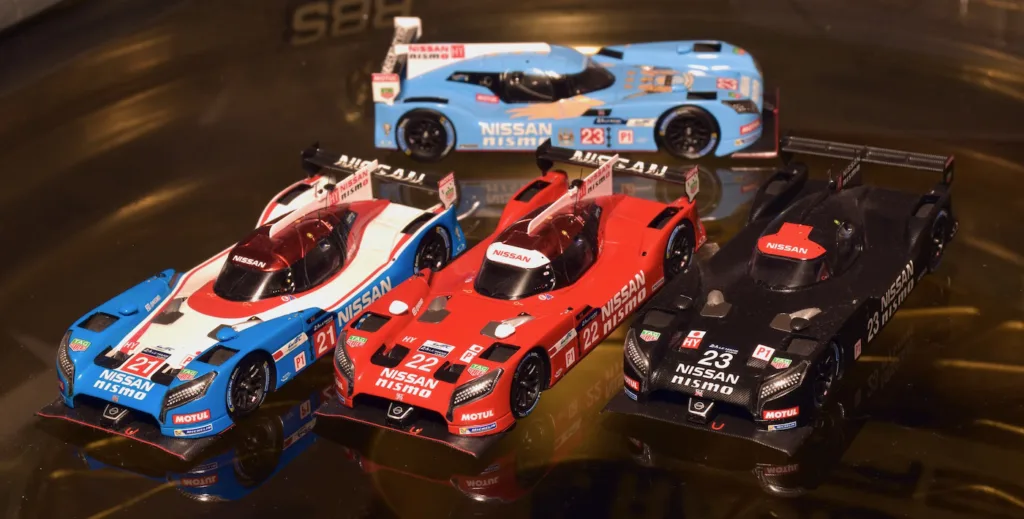
2015 presentation, Nissan GT-R LM. Nissan spends millions on promotion, starting with the launch of the car during the Superbowl. The team misses the first race of the WEC at Silverstone, but that same weekend this car is presented in Manchester, in the colors of the local football club.
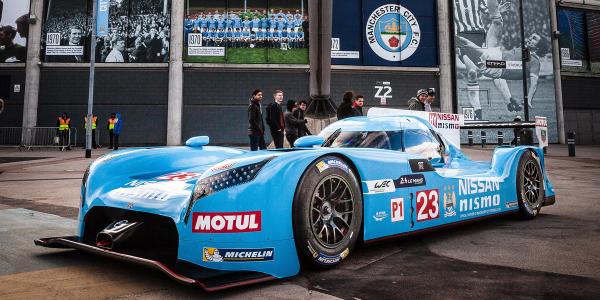

- SPARK S4561 (resin)
Thanks for visiting ;-)
